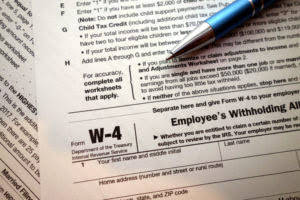Contingent Liability: What Is It, and What Are Some Examples?

Moreover, if the likelihood of an economic benefit inflow increases to the level of probability, the entity is required to disclose the contingent asset (IAS 37.35). A contingent liability is a specific type of liability that could happen based on the outcome of an uncertain future event. This type of liability https://www.bookstime.com/ only gets recorded if the contingency is a possibility, and also if the total amount of the potential liability is reasonably and accurately estimated. GAAP accounting rules require probable contingent liabilities—ones that can be estimated and are likely to occur—to be recorded in financial statements.
Recognition and disclosure of contingent assets
A contingent liability is an amount that you may have an obligation in the future depending on certain events. Considering and accounting for contingent liabilities requires a broad range of information and the ability to practice sound judgment. They can be a tricky endeavor for both management and investors to navigate since the likelihood of them occurring isn’t guaranteed. The warranty liability account will be reduced when the warranties are paid out to the customers. For example, Vacuum Inc. will debit the warranty liability account $500 and credit either cash– in the case of a full refund– or inventory– in the case of a replacement– in the amount of $500. It will end up reducing both a liability account and an asset account at that point.
Possible Contingency
It’s impossible to know whether the company should report a contingent liability of $250,000 based solely on this information. Here, the company should rely on precedent and legal counsel to ascertain the likelihood of damages. First, let’s look at the probability the lawsuit will have a negative outcome.

What Are Examples of Contingent Liability?

Before the introduction of IAS 37, these uncertainties may have been exploited by companies trying to ‘smooth profits’ in order to achieve the results that their various stakeholders wanted. Warranties arise from products or services sold to customers that cover certain defects (see Figure 12.8). It is unclear if a customer will need to use a warranty, and when, but this is a possibility for each product or service sold that includes a warranty. The same idea applies to insurance claims (car, life, and fire, for example), and bankruptcy. There is an uncertainty that a claim will transpire, or bankruptcy will occur.

Two Financial Accounting Standards Board (FASB) Requirements for Recognition of a Contingent Liability
Generally, a ‘remote’ likelihood ranges between 5% and 10%, though IAS 37 doesn’t explicitly specify this. IAS 37.86 details the disclosure requirements, emphasising that any contingent liability with an outflow possibility exceeding ‘remote’ should be disclosed. Two classic examples of contingent liabilities include a company warranty and a lawsuit against the company. Both represent contingent liabilities meaning possible losses to the company, and both depend on some uncertain future event. If a possibility of a loss to the company is remote, no disclosure is required per GAAP. However, the company should disclose the contingent liability information in its footnotes to the financial statements if the financial statements could otherwise be deemed misleading to financial statement users.
For example, investors might determine that a company is financially stable enough to absorb potential losses from a contingent liability and still decide to invest in it. But a contingent liability needs to be large enough to be able to truly affect a company’s share price. The International Financial Reporting Standards (IFRS) and GAAP outline certain requirements for companies to record all of their contingent liabilities. This is because of their connection with three discount accounting principles.
The Committee concluded that this deposit constitutes an asset, and the entity isn’t required to be virtually certain of a favourable outcome to recognise it (as opposed to expensing this amount). The deposit ensures future economic benefits, either through a cash refund or settling the liability. Nonetheless, this agenda decision shouldn’t be generalised to regular legal proceedings where, facing an adverse verdict, an entity doesn’t retain any assets.
- As you’ve learned, not only are warranty expense and warranty liability journalized, but they are also recognized on the income statement and balance sheet.
- However, suppose neither of those conditions can be met—then, the contingent liability could be inserted in the footnote of a financial statement (or leftover if immaterial).
- A contingency describes a scenario wherein the outcome is indeterminable at the present date and will remain uncertain for the time being.
- Instead, Sierra Sports will include a note describing any details available about the lawsuit.
- In this case, Rey Co would include a provision for the $10m legal provision in liabilities.
- Onerous contracts Onerous contracts are those in which the costs of meeting the contract will exceed any benefits which will flow to the entity from the contract.
- These lawsuits have not yet been filed or are in the very early stages of the litigation process.
FRC publishes thematic review findings on IAS 37
To elaborate upon the prior section, the different types of contingency liabilities are described in more detail here. While these sorts of conditional financial commitments are not guaranteed, per se, the odds are likely stacked against the company.
- Sierra Sports may have more litigation in the future surrounding the soccer goals.
- Finally, it will examine some specific issues which are often assessed in relation to the standard.
- An example is litigation against the entity when it is uncertain whether the entity has committed an act of wrongdoing and when it is not probable that settlement will be needed.
- And as the guarantee expenditures are made by the firm, the liability is debited and the appropriate accounts are credited.
- Therefore, contingent liabilities—as implied by the name—are conditional on the occurrence of a specified outcome.
